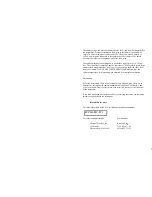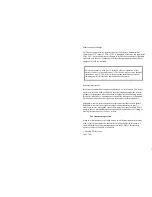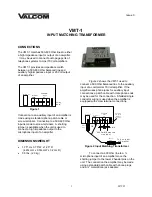
3
This device complies with Part 15 of the FCC Rules. Operation of this
device is subject to two conditions: (1) This device may not cause harmful
interference, and (2) This device must accept any interference received,
including interference that may cause undesired operation.
Modifications or changes.
This device is approved for unlicensed use by the Federal Communications
Commission(FCC) under 47 CFR 15.249 (a paragraph of the rules and regulations
of the FCC). Any modifications or changes to this device are expressly forbidden,
and could void the user
=
s authority to operate this equipment. Modifications or
changes will void the warranty.
Reducing interference
Interference from cordless telephones and other wireless products. This device
operates in the same band as 900 MHz cordless telephones and other wireless
products. If interference is detected in the telephone (usually a buzzing sound),
this device should be re-oriented or moved until the interference is eliminated.
This device must not be allowed to cause interference to these telephones.
Multipath is another form of interference that can distort the received picture.
Multipath is the result of a signal traveling from the transmitter to your TV
receiver in two, or more paths. One of these paths is a signal bouncing from a
metallic object. Multipath distortion can usually be reduced by re-orienting, or
moving, the transmitter, or receiver, or both.
Two transmitter operation
When two transmitters are operating nearby, two different frequencies must be
used so that the transmitters do not interfere with each other. In this case, we
recommend that one of the transmitters operate at 906 MHz. The other may
operate at either 916.5 MHz or 920 MHz.
8
National Wireless, Inc.,
June, 2001





















